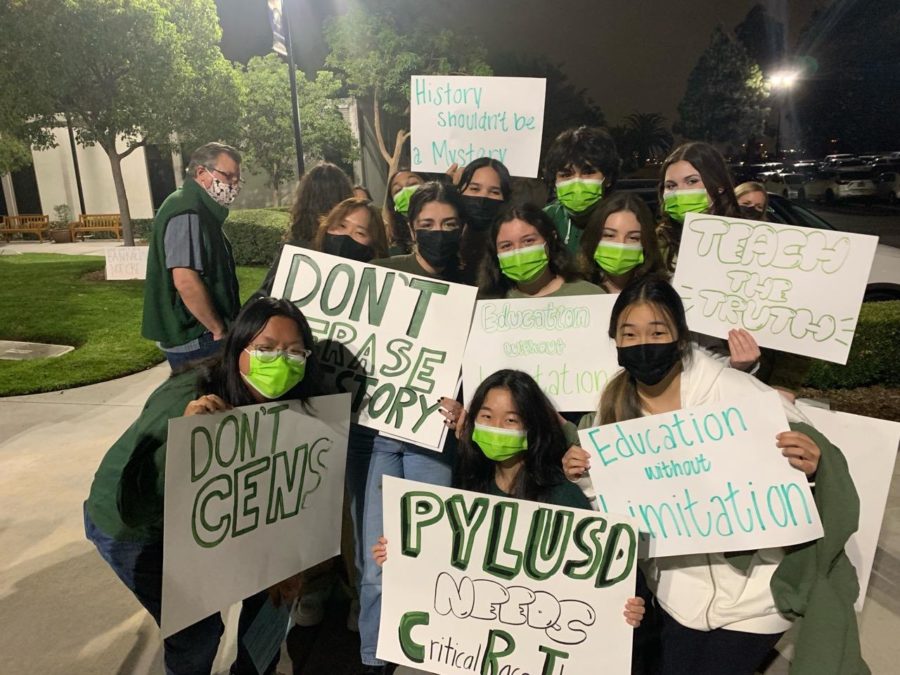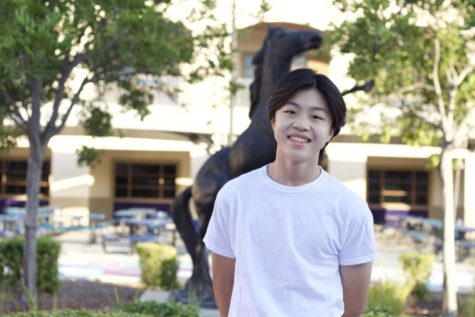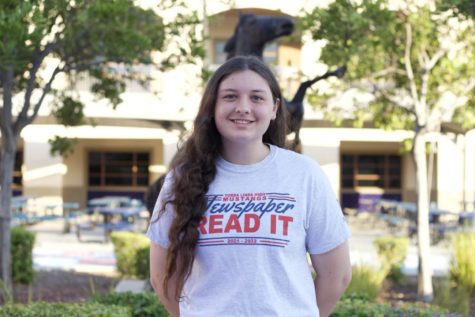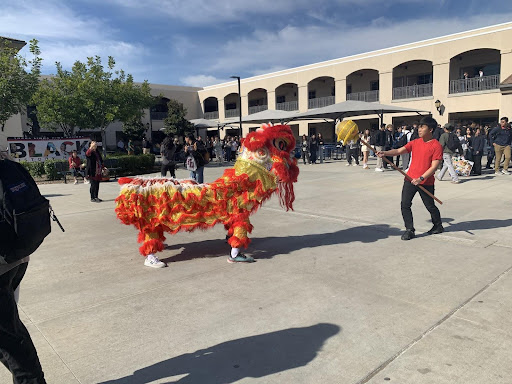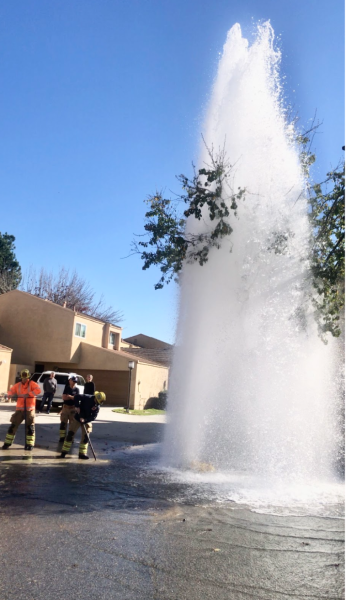PYLUSD’s Resolution to Ban Critical Race Theory
Camille Khong and other students at the March 23rd board meeting in opposition to the CRT ban.
April 5, 2022
Recently, the school board of Placentia-Yorba Linda Unified School district has been preoccupied with a resolution to ban CRT. Should it pass, it would mean that PYLUSD would be the first school district in California to have banned CRT.
The district will vote on April 5 on whether to pass or negate the resolution. If the resolution passes, PYLUSD would “not include Critical Race Theory as a framework in any course offerings.” In the drafted resolution, PYLUSD uses the California Ethnic Studies Model Curriculum definition for critical race theory, which it cites as “recogniz[ing] that race is not biologically real but is socially constructed and socially significant. It acknowledges that racism is embedded within systems and institutions that replicate racial inequality.”
The resolution also provides justification and intent for banning CRT. It states: “The Placentia-Yorba Linda Unified School District desires to uplift and unite students by not imposing the responsibility of historical transgressions in the past and instead will engage students of all cultures in age-appropriate critical thinking that helps students navigate the past, present, and future.” It echoes the sentiment popular among CRT opposition, that CRT does not improve the state of racism by teaching its history; rather, it aggravates it by further pointing out. As the logic goes, one race in modern times does not need to feel guilt for the mistakes it made in the past.
These points, as have been seen with other CRT debates around the country, have been widely contested. PYLUSD is no exception.
While The Wrangler was unable to secure an interview with a board member, Alyssa Griffiths, the Director of Communications for PYLUSD, offered to answer some of our questions via email. Unfortunately, her responses did not come in time for the publication of this article.
However, The Wrangler was able to contact Camille Khong (11), who runs an Instagram account (@studentsofpylusd) opposing the CRT ban. “Students of PYLUSD” leads much of the student push against the ban.
The account has garnered 429 followers since its first post on December 11, 2021. On the account, posts encourage students to oppose the ban, teach about issues of systemic racism, and show actual clips from board meetings, including the video “Questionable Things that Happened at my School Board Meeting.”
Students of PYLUSD also have a campaign color, green, which many wear at board meetings to demonstrate their dissent. The group hopes that with enough community opposition to the resolution, the board members will vote on what seems to be the majority.
Only Ms. Buck and Ms. Freeman are responsive to the hundreds of students against this ban.
— Camille Khong
According to Khong, however, “only Ms. Buck and Ms. Freeman are responsive to the hundreds of students against this ban.” She says that 3 out of the 5 board members support the ban despite massive pushback.
Khong makes a good point.
It seems that opinions largely err on the side of the opposition. During public comment, the period during the meeting in which members of the audience are able to speak and address the board, a strong majority of speakers opposed the ban – with just a select few proclaiming their support of it.
One woman pointed out the discrepancy during her public comment, asking the board if they “bother[ed] to poll a representative sample of students and teachers about this ban.” She then pointed to the audience and said “no need, they’re right here.”
Other opposition speakers echoed similar remarks, but all surrounded the core tenet of CRT that it must be taught to preserve the historical integrity of the classroom.
In Khong’s own public comment, she said, “eliminating the conversation is extremely harmful,” referencing the importance of discussion that would ultimately lead to beneficial results. She mentioned her involvement in the political and social activism club here at YLHS, saying that “ it promotes civic engagement through discussion no matter where you fall on the political system.” Khong, with fellow students, argues that teaching CRT does not mean implementation of the racist doctrine; rather, it presents an opportunity for learning.
Another side took the side of possible curriculum changes through the ban.
According to Khong, “the college board has directly written a letter to our district warning them that censorship will cause our district to lose its AP credentials.” During the March 23rd meeting, a parent spoke on behalf of her freshman daughter who could not be present, who had questions regarding the curricular elements of the ban, saying that it would be impossible for her to be a competitive college applicant without any AP classes. The fear of significant changes to the curriculum is something that worries many; my Language Arts teacher at school worries that she won’t be able to teach To Kill a Mockingbird or Of Mice and Men.
Those supporting CRT, however, are met with a loud minority that strongly disfavors it.
At the forefront of that argument stands the fundamental idea that CRT promotes racism, rather than discourages it. It’s the idea that the whole premise of CRT teaches students to be guilty for being a race that they can not change, and that means classes aren’t inclusive since they ostracize a population of students. Many of the other points that the supporters of the ban make can be found on the draft of the resolution, mostly in the “whereas” section that justifies why the bill is needed. (https://4.files.edl.io/6bf9/03/30/22/193209-3b2df49c-8afe-4f14-81c4-defb08b214f2.pdf)
The debate, other than these points, becomes very muddled. Since board members must comb through each line of the resolution, debates start over minute details.
Members of the school board who support the ban–primarily Youngblood and Blades–took an angle attacking the very nature of racism itself. At the last meeting, Youngblood asked rhetorically if “there [has] been any other race that is being subjected to racism other than the white race,” in reference to indentured servants. He also mentioned that “it seems every race throughout the world has been a slave at one time or another.”
The clip, along with others featured in the Students of PYLUSD video “Questionable Things that Happened at my School Board Meeting,” has received criticism online. The video goes on to show similar “questionable” moments during the board meeting–including Blades calling systemic racism a matter of opinion as proof it should not be taught to avoid conflict. The video points out mistakes in the arguments of Blades, Youngblood, and Anderson (ban supporters), while highlighting Carrie Buck’s role in refuting the points of her opposing board members.
Of the board, President Buck and Trustee Freeman are in strong opposition to the ban, while Clerk Blades and Trustee Youngblood are in strong favor.
The final member, Marilyn Anderson, who was once widely considered to be the “swing vote” seems to be leaning in slight favor of the ban as the April 5 voting date approaches.
On that day, the 5 members of the board will make a decision–potentially changing the future of our education.


